#tithonus deity
Text
messy sigil/symbol i made to represent Tithonus
this one holds a personal connection to me and him and i encourage other to make their own sigils for deities you work with but i wanted to share mine because there isn't a lot of stuff for him!! 🪲💕

#🧿🌸practice#witch#witchcraft#pagan#paganism#hellenic deities#hellenic polytheism#🪲tithonus#lord tithonus#prince tithonus#tithonus devotee#tithonus worship#tithonus sigil#tithonus symbol#tithonus deity#sigil#sigil magic#sigilwork#witchblr#deity work#deity worship#deity devotion
26 notes
·
View notes
Text
Lord Tithonus

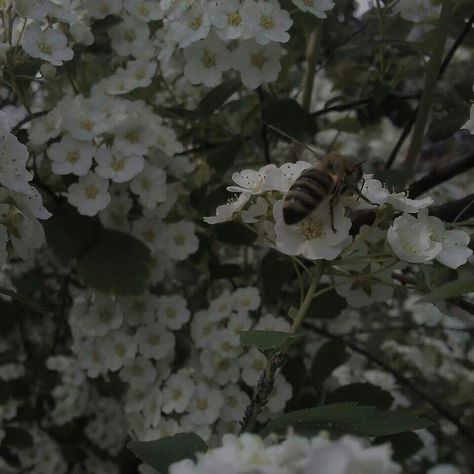
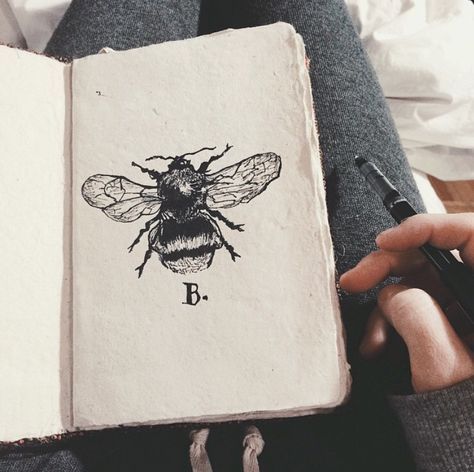
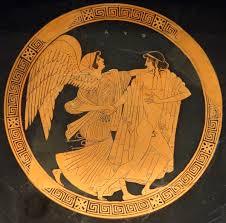
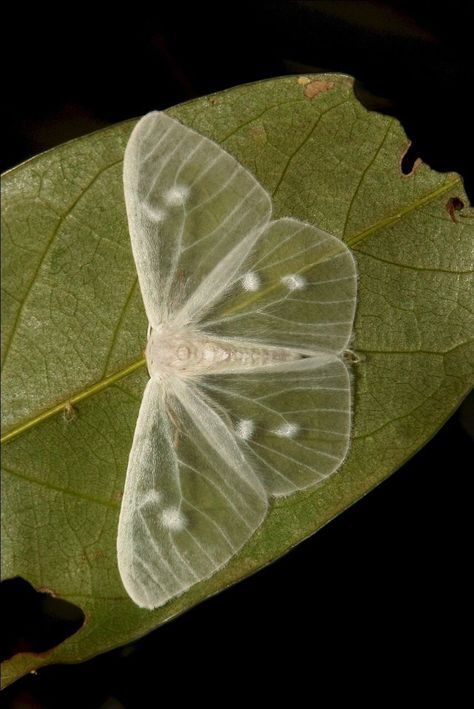
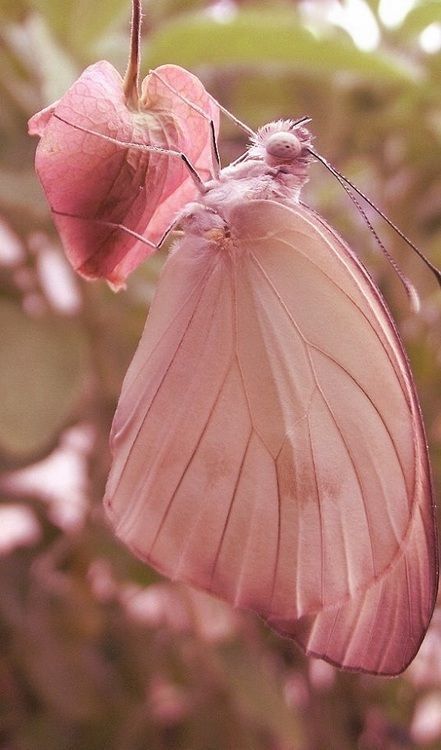
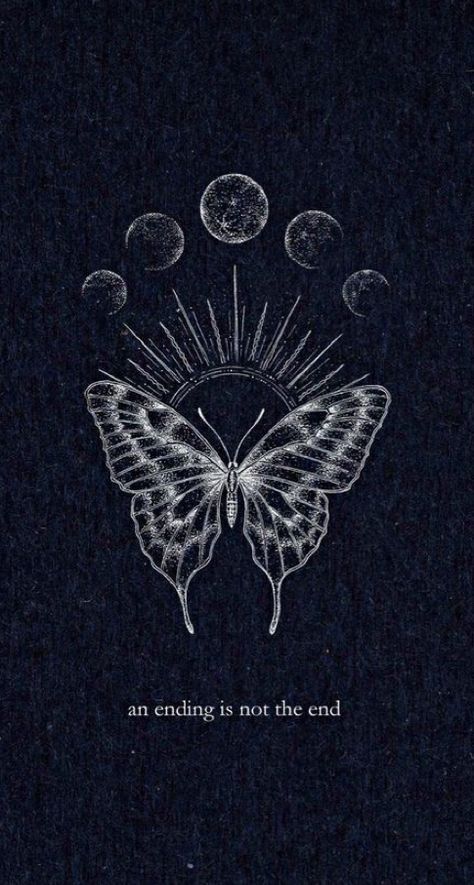
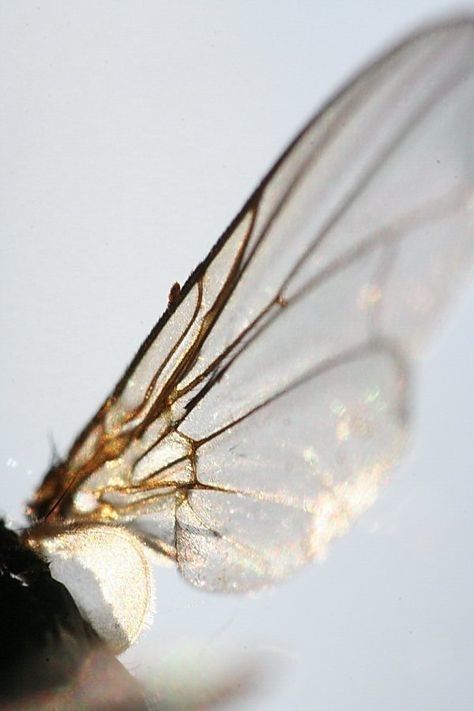
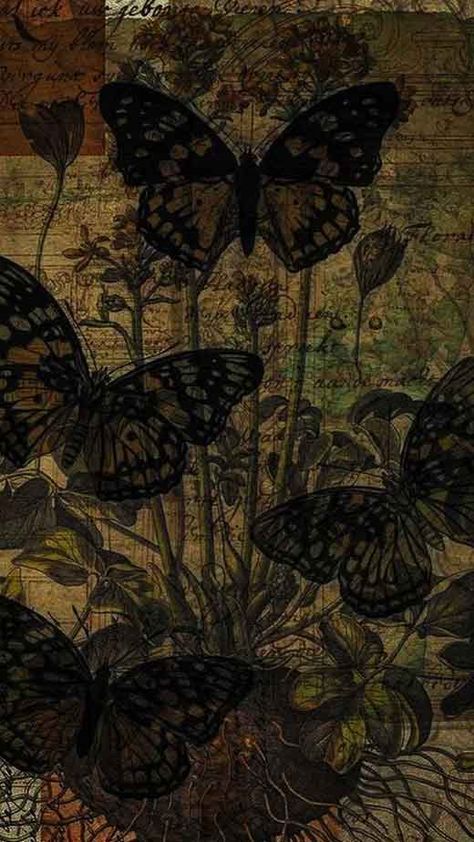
God of insects
requested by @curious-chaosmagiic taking requests
#Tithonus devotee#devotee#greek gods#greek mythology#ancient greek#Tithonus deity#Tithonus worship#hellenic pagan#paganism#pagan#hellenic polytheism#hellenic polytheistic#hellenic devotion#hellenic polythiest#hellenic deities#hellenic gods#hellenic polytheist#hellenism#hellenic pantheon#lord Tithonus#Tithonus devotion#greek god#Tithonus#requested
34 notes
·
View notes
Text
Y'all, I have very quickly become 'obsessed' (for lack of a better term) with Vasanta (Hindu God of Spring and flowers)
Why do I always become pulled towards the most obscure deities/deities who don't have much info about worship
First Ammit, then Tithonus, Luciferus, etc. and now Vasanta
#egyptian paganism#kemetism#greek paganism#hellenic paganism#roman paganism#hinduism#hindublr#ammit#tithonus#luciferus#vasant#vasanta#deity worship
54 notes
·
View notes
Text
Greek Gods 101: A Masterlist
This is a masterlist of the “Greek Gods 101” series. This series aims to provide basic information and worship ideas for both major and minor deities. This masterlist also involves heroes, deified mortals, spirits, and other figures of Greek mythology.
Aceso
Acheron
Acratos
Aedos
Aegle
Aeolus
Aether
Aglaea
Akhlys
Ampelus
Amphitrite
Ananke
Anemoi
Angelia
Anteros
Antheia
Aphrodite
Apollon
Aporia
Ares
Arete
Ariadne
Aristaeus
Artemis
Asklepios
Asteria
Astraeus
Astrape
Athena
Atlas
Bia
Britomartis
Calliope
Carpi
Cassandra
Ceraon
Cerberus
Ceto
Chaos
Charon
Chione
Chiron
Chloris
Chrysos
Circe
Clio
Clymene
Comus
Cratus
Cronos
Daphne
Deimus
Deipneus
Demeter
Dicaeosyne
Dike
Dionysus
Dysnomia
Ececheria
Eileithyia
Eirene
Ekho
Electryone
Eleos
Elpis
Endymion
Enyo
Eos
Epiales
Epione
Epiphron
Erato
Erebus
Eris
Eros
Ersa
Eucleia
Eudaemonia
Eunomia
Eupheme
Euphrosyne
Euporia
Eupraxia
Eurybia
Eurydice
Eusebia
Euterpe
Euthenia
Eutychia
Fates
Furies
Gaea
Galateia
Ganymedes
Gelus
Hades
Harmonia
Harpocrates
Hebe
Hecate
Hedone
Hedylogus
Helius
Hemera
Hephaestus
Hera
Heracles
Hermaphroditus
Hermes
Hestia
Hesychia
Himeros
Homonoia
Horae (Seasons)
Horae (Time)
Hormes
Hybris
Hydros
Hygieia
Hymenaeus
Hypnus
Iaso
Iris
Lelantus
Lethe
Leto
Macaria
Matton
Medusa
Melinoe
Melpomene
Methe
Mnemosyne
Morpheus
Nemesis
Nike
Nyx
Oizys
Orpheus
Orthannes
Ossa
Ourania
Ouranos
Ourea
Paeon
Paidia
Palaemon
Pallas
Pan
Panacea
Pandaisia
Pandora
Pannychis
Panopia
Paregoros
Pasithea
Pegasus
Peitho
Penia
Penthus
Persephone
Perses
Perseus
Phales
Phanes
Phaunus
Pheme
Philophrosyne
Philotes
Phobus
Phoebe
Phorcys
Phthonus
Phusis
Pistis
Plutus
Poena
Polemus
Polymnia
Pompe
Pontus
Ponus
Porus
Poseidon
Pothus
Priapus
Prometheus
Pronoea
Prophesis
Psamathe
Pseudologoi
Psyche
Ptocheia
Rhea
Selene
Silenos
Sophrosyne
Soter
Soteria
Styx
Tartarus
Telesphorus
Terpsichore
Tethys
Thalassa
Thalia (Mousai)
Thalia
Thallo
Thanatus
Thaumas
Thea
Themis
Theseus
Thesis
Thrasus
Thyone
Tithonus
Triptolemus
Triton
Tritopatores
Tyche
Tychon
Urania
Uranus
Zagreus
Zelus
Zeus
What is a “Universal Offering/Devotional Act?”
Feel free to request or suggest deities! This list will be done in order but you can ask for me to complete one that’s further down the list.
This list is subject to change. There are probably repeat deities (deities who go by multiple names, parts of groups like the Horae or Charities who are mostly grouped together, etc.) on this list. Some deities are not on here. Some names are spelt wrong or different.
#masterlist#masterpost#greek gods 101#deities#hellenism#helpol#hellenic#hellenic pagan#hellenic polytheism#hellenic community#hellenic polytheist#hellenic deities
2K notes
·
View notes
Note
hi, can i ask smth if its okay?
is there any diety you would know of that sends bugs as a message? been seeing a LOT of bug motifs recently, my pinterest page is flooded with them despite never looking at them, i’ve woken up to one on my windowsill, there was a massive atlas moth on my door as i was about to go to an appointment, and there was one, like this really beautiful shimmery one that landed right on my hand just. chilling when i was at a restaurant. in a place where there was like…0 chance of that bug being there???
not sure if im jus an insect whisperer now or what 😭 but like if you have any advice pls let me know
Hi!!! Ofc you can ask that!!! Insects and deities, hm...
Well, I'm assuming these insects are showing up in uncommon places! If it's normal each year for you to see insects, it may not be a sign. Buuuuut considering it doesn't sound very normal, and there are other factors besides in-person encounters, it's totally reasonable to wonder about deities!!
I know that Loki is associated with insects, particularly moths, flies, and spiders, so he might be worth looking into.
There's Beelzebub, lord of the flies, if you're interested in working with infernals.
In Greek mythology, there's Tithonus, known as the god of insects.
Eos is Tithonus's wife, and is sometimes associated with insects, as well.
That's about all I can think of/find for now!! Good luck 🫶 and take care of yourselves!!
#greek deities#norse deities#greek deity#deities#hellenic deities#loki deity#deity work#deity worship#deity#divination#hellenic pagan#paganism#eclectic pagan#pagan#pagan witch#gay pagan#pagan blog#pagan community
20 notes
·
View notes
Text
An AU Concept: The myth of Eos and Tithonus but applied to Rafal and Rhian. (Except, it would have to be interpreted platonically, and besides, Tithonius taking the form of a cicada for the rest of his days recalls Rhian in his moth form in my mind.)
I think it would be simultaneously hilarious and angst-ridden, actually. Like, curse the Storian! (The Pen would be cast as Zeus.) Except, in reality, the fault would really lie with Rafal lacking foresight, and the "precision of language" or inexact-requests-from-deities trope, which I'm often fond of.
⸻
Here's a brief reference to the story if anyone needs it:
#school for good and evil#rise of the school for good and evil#rafal#rafal mistral#rhian#rhian mistral#sge#sfgae#the school for good and evil#tsfgae#rotsge#rotsfgae#my post#my aus#deity#god#classics#classical mythology
4 notes
·
View notes
Text
Character Intro: Méli (Kingdom of Ichor)
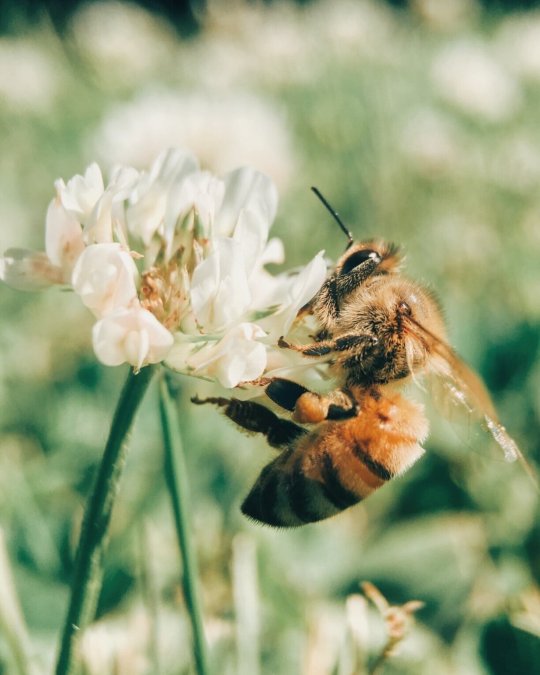





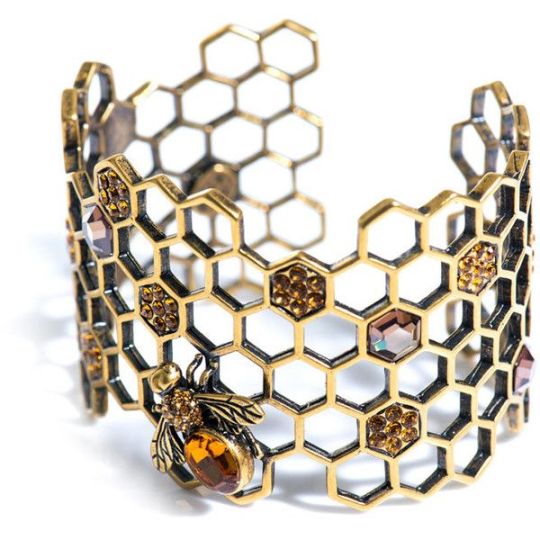


Nicknames- The Queen Bee by the people of Olympius
Age- 18 (immortal)
Location- Syros, Olympius
Personality- She's bubbly, positive, & caring- never judgemental. Much like her symbolic animal she's organized, efficient, diligent, sociable, and has a "hive" mindset- thinking more so about the community than just herself. She's currently single.
She has the standard abilities of a goddess. As the goddess of bees & honey, her other powers/abilities include mélikinesis (honey generation/manipulation), honey mimicry, palynokinesis (pollen manipulation), beeswax manipulation, being able to shapeshift into/communicate with all species of bees, also being able to communicate with ants, hornets, & wasps, and is able to adapt bee physiology into her physical form- protruding stingers from her third and fourth knuckle, being able to see ultraviolet light (her eyes turn black/compound looking while maintaining their size), can grow three extra sets of legs, being able to crawl on walls, and can manifest bee wings from her back).
Méli lives on her own at her gorgeous estate in the state of Syros. The outside may look like the typical beach style house, but inside, the roof is in the shape of a hexagonal pyramid. There's wide columns of light cedarwood with lots of windows bringing in natural sunlight. Most of the walls are painted with a honeycomb pattern in colors of gold, yellow, cream, & glittery black. The backyard seems to go on for miles filled with vibrant greenery, flowers, towering palm trees, and her apiary (also known as a bee farm). Even though she can manifest a pair of bee wings on her back to fly, she usually gets around in her cream yellow VW covertible (with Imperial Gold chrome spinners). She also owns a vacation cottage in the Hearthwood neighborhood of New Olympus.
Go-to drinks for her include the bee's knees cocktail, honey lime margaritas, honey bourbon sangrias, sparkling water, lemon-lime soda, champagne, & honey almond milk smoothies. Her usuals from The Roasted Bean is the large honey oatmilk latte and the pineapple lychee splash.
Méli's one of the few relatively "young" deities along with Horme (god of energy), Adranos (god of fire), Chelone (goddess of tortoises), Aergia (goddess of sloth, idleness, & laziness), and Tithonus (god of insects).
For breakfast she loves stopping by at The Bread Box to get an egg & cheese sandwich on a hero. At home she'll eat a stack of buttermilk vanilla pancakes (topped with butter & drizzled in honey), a smoothie bowl (made with coconut milk & topped with honey, chia seeds, sliced peaches, toasted almonds, and granola), or a big bowl of Earthly Harvest's Oats & Honey cereal (with almond milk).
In the pantheon Méli's good friends with Zephyrus (god of the west wind), Eleutheria (Lulu) (goddess of liberty), Iris (goddess of the rainbow), Adephagia (goddess of gluttony), Eos (Titaness of dawn), Hemera (goddess of the day), Chloris (goddess of flowers), Thallo (goddess of spring & new growth), Antheia (goddess of swamps, vegetation, & floral wreaths), Carpo (goddess of autumn & fruits), Hermes, Auxo (goddess of summer, vegetation, & plants), Notus (god of the south wind), Pandaisia (goddess of banquets), Apollo (god of the sun, music, poetry, healing, medicine, archery, plague, light, & knowledge), The Hesperides, Panacea (goddess of univeral remedy), Urso (god of bears), Terpischore (muse of dance), and Aoide (goddess of voice & song). Méli secretly has a crush on Matton (god of meals). She greatly admires Gaia (goddess of the earth); who was her mentor, Demeter (goddess of the harvest & agriculture), Hestia (goddess of the hearth), Livádi (goddess of meadows), Eunostos (goddess of the flour mill), Promylaia, and Karme (demi-goddess of the harvest).
She's gone to Eleusis a few times to partake in the Cornucopia festival.
She loves snacking on raw honeycomb and honey barbeque cheese puffs!
Méli is confident in her plus size figure! Her latest Fatestagram post was a photo of her and Eos at a beach in Rhodes. She was wearing a stringy neon yellow Swimsilk bathing suit with a white gold jeweled waist chain. It got almost 10,000 likes!
Her main business & source of income is The Gold Pot (which includes an official website and store location in her home state) where various specialized creamed honey as well as raw honey are sold. Méli's personal faves are the cinnamon honey & the organic matcha honey. There are plans for future store locations in Achaea, Santorini, as well as a makeshift store in the Mall of Olympius. For other work/income Méli models for White Lily Gallery (has her own name plate necklace), Sunshine Radiance (loves using the vitamin c brightening cleanser), Glory's Crown (loves the honey hydrating hair oil), Glimmer Victory (the goddess Nike's jewelry brand), FATshionista, and Treis Epochés. She has recently partnered up with the goddess Philyra (and her cosmetics brand Olmorfia) to release a themed make-up palette called Honeylicious.
She employs dozens of meliads (ash tree nymphs).
One of her favorite sweet treats is the honey-salted caramel ice cream. Méli also likes Hestia's signature honey cake, Hesperis' apple pie, and The Frozen Spoon's graham ice cream sandwiches (made with vanilla ice cream with added in butterscotch chips!) She also likes to stop by at Skóni Parádeisos for the honey-butter biscuits & airy beignets!
She's often vocal about the slight decrease in the overall honeybee population in the country- often due to intensive agriculture, harmful pesticide use, & biodiversity loss.
Méli likes using the Luxuria shimmering body oil in "Ambrosia Honey."
One of her favorite gifts was a series of engraved gold bangles from Eos.
Her favorite personal gift that she got herself is the jeweled beehive clutch from Diamond Ave., costing almost 6,000 drachmas!
In her free time she enjoys beekeeping, gardening, sunbathing, cloud surfing, going to the beach, tennis, listening to music, bike riding, drawing, painting, watching TV, and yoga.
She loves stopping at The Hearthside Diner for an order of the glorious lemon-honey glazed fried chicken. Méli also likes the 10 pc honey barbeque chicken tenders with olympian sized fries from Olympic Chef. Other favorite foods include sweet & sour chicken, egg rolls, moussaka, fried brown rice, sweet buttered corn, vegetable lo mein, and corn dogs (with honey mustard dipping sauce).
"Words are like bees. Some are sweet as honey while others can leave a sting."
#my oc#original character#my original oc#oc character#my character#my oc character#oc intro#character intro#oc introduction#character introduction#modern greek gods#modern greek mythology#greek myth retellings#greek goddess#greek goddesses
12 notes
·
View notes
Text
Greek myths: POC in the Legends
It's typical to find some ethnocentric Hellenic pagans insistent on the general lack of colour in their religion. The stories take place across the Greek islands and Italy, so obviously there can only be white heroes and gods in the myths, right? Perhaps it's time for these folks to have a history lesson.

The vague boundaries of Ancient Greece stretched, at the very least, from Macedonia to Rhodes, and housed hundreds of states, towns, cities and villages. Many of these settlements were close to continents such as Africa, where the Egyptians and Carthaginians (a Punic nation) lived. Apart from them, the Greeks and Romans also knew of and traded with the "Ethiopians" (Αἰθίοπες), which was a general term referring to Black people (from Αἴθω + Ὤψ, "Dark Face"). This closeness of different ethnicities meant that there would be some diversity of religious figures by virtue of cultural exchange.
Memnon (Μέμνων) was the demigod son of Tithonus and the goddess Eos, and was the king of Ethiopia. There was also his brother Emathion (Ἠμαθίων) who fought Heracles. Eurybates (Εὐρυβάτης) was Odysseus' "dark-skinned" (μελανόχροος) companion, and was honoured by him above his other comrades (Odyssey 19, Lines 246-249).
And to use a more well-known example: Andromeda (Ἀνδρομέδα), wife of Perseus, was the daughter of Cepheus and Cassiopeia, king and queen of Ethiopia. The legendary woman more beautiful than Aphrodite was Black. She and Perseus may also be one of the earliest examples of an interracial union in the Greek stories.
And to those who would object and say these figures are represented as white in sculptures and wall paintings, the divergence from the original textual sources is a simple result of interpretatio graeca. People will often render foreign persons or deities through the appearance and mannerisms of their own nation (e.g. old paintings of Jesus in Ethiopia and China showing him to be Ethiopian or Chinese), and in this case Black characters were filtered through a Greek and Roman lens.
The ancient Greeks and Romans saw skin colour as a designation of one's national origin, but not as a racial identifier. If you approached a Roman and told him the vikings were of the same "race" as him, he would be deeply offended. "Race" was formulated by European pseudoscientists in the 15th to 16th centuries to justify the barbaric things that were done to enslaved Africans, Indigenous peoples in the Americas, and later South Asians.
I as a white person am wholly comfortable, and also appreciative, of the presence of people of colour in my religion. They serve as a reminder of the universality of attributes such as heroism, strength, kindness, courage and valour. Virtue is not bound to one skin colour, and we are all fundamentally one race: the Human Race.
So don't let these pseudadelphoi (false siblings) stir discord and disunity in our communities. All are welcome in the Faith and to the graces of the gods, regardless of colour, sexuality, or gender identity.
7 notes
·
View notes
Text
Theia – Titan Goddess of Sight

In Greek mythology, Theia was one of the Titanides (the female Titans) and the Greek goddess of sight and shining elements. The Ancient Greeks believed that Theia’s eyes were light beams which helped them to see with their own eyes. She was one of the most popular goddesses for this reason. Theia was also famous for being the mother of Helios, the sun god who brought light to the mortals every day.
Theia’s Origins and Name
Theia was one of twelve children born to Gaia (the personification of the Earth) and Uranus (the god of the sky). Her siblings included Cronus, Rhea, Themis, Iapetus, Hyperion, Coeus, Crius, Oceanus, Phoebe, Tethys and Mnemosyne and they were the 12 original Titans.
Unlike almost all the other deities whose name had a connection with their role, Theia’s name was different. It was derived from the Greek word ‘theos’ which simply means ‘divine’ or ‘goddess’. She was also called ‘Euryphaessa’ which means ‘all-bright’ or ‘wide-shining’. Therefore, Theia Euryphaessa means goddess of brightness or light.
Since it was believed that sight existed only because of the beams of light that projected from her eyes, it’s possible the goddess Theia was associated with a particular kind of light. Perhaps this is why her name Euryphaessa means light.
Theia’s Offspring
Theia married her brother Hyperion, the Titan god of light and they had three children who became important deities of the Greek pantheon. All three were in some way connected with light:
Helios was the god of the sun. His role was to travel in his golden chariot, pulled by winged horses from the east to the west bringing sunlight to the mortals. In the evening he would return to his palace in the east corner of the earth to rest for the night. This was his daily routine until Apollo took over his role.
Selene was the goddess of the moon, also associated with certain lunar elements such as the calendar months, the tides of the ocean and lunacy. Like her brother Helios, she rode a chariot across the sky, also pulled by winged horses, every night. Selene was later replaced by the goddess Artemis, Apollo’s sister.
Eos was the personification of dawn and her role was to rise each morning from the edge of Oceanus and ride across the sky in her chariot drawn by winged horses, bringing in the sun, her brother Helios. Because of a curse placed on her by the goddess Aphrodite, she became obsessed with young men. She fell in love with a mortal man called Tithonus and asked Zeus to grant him eternal life but she forgot to ask for eternal youth and her husband grew old forever.
Because Theia had a connection with light, she was often depicted as a considerably beautiful woman with very long hair and light either surrounding her or held in her hands. She was said to have been a kind goddess and was highly popular amongst mortals.
Role of Theia in Greek Mythology
According to the myths, Theia was an oracular goddess which means she had the gift of prophecy, something she shared in common with her sisters. She embodied the glittering of the sky and was associated with other things that glistened.
The Greeks believed that it was she who gave the precious metals, like gold and silver, their luminous, shimmering qualities. This is why gold was an important metal to the Greeks with an intrinsic value – it was the divine reflection of the goddess Theia.
Theia and the Titanomachy
According to some sources, Theia kept a neutral stance during the Titanomachy (the 10 year war fought between the Titans and the Olympians). After the war ended with the Olympians gaining victory, it’s possible that she went unpunished with the rest of her sisters who took no part in the war. There’s hardly any reference to Theia after the Titanomachy, and she eventually loses her position as an important deity.
In Brief
Over time, the goddess Theia disappeared from the ancient myths and was only praised for the role she played as a mother, especially as the mother of Helios. She’s one of the lesser known deities of the Greek pantheon but many who know her believe that she still lives in the realm of Oceanus, the place to where Helios disappears at the end of each day.
https://symbolsage.com/theia-goddess-of-sight/
8 notes
·
View notes
Text
I'm a Tithonus devotee, of course i've read practically everything on him
I'm a Tithonus devotee, of course i love music and storytelling
I'm a Tithonus devotee, of course i'm a helpless romantic with bad relationship history
I'm a Tithonus devotee, of course i lay in bed all day
I'm a Tithonus devotee, of course i love bugs even if i'm scared of them
I'm a Tithonus devotee, of course i'm working on my bounderies
I'm a Tithonus devotee, of course i have an old soul
I'm a Tithonus devotee, of course my favorite colours are gold and green
I'm a Tithonus devotee, of course i love spoiling my friends without thinking about myself
I'm a Tithonus devotee, of course i'm loud and proud of how much i've changed!!!
#🧿personal#sillyposting#witch#witchcraft#witchblr#pagan#paganism#wicca#wiccan#🪲tithonus#tithonus#lord tithonus#tithonus devotee#deity worship#tithonus deity#i think these are so silly#and cute!!#hellenic polytheism#hellenic deities#hellenic gods
22 notes
·
View notes
Text
I touched briefly on immortality and the dream of it before, and how I don’t think we as humanity should stop writing and pondering immortality and its implications. I don’t even think we should stop trying to extend our lives in pursuit of it, because while immortality itself may be impossible simply due to natural decay of, well, everything – it has been dreams and dreamers that have expanded what we are capable of.
Centuries ago, we couldn’t do a heart transplant.
Now, I have a friend recovering from one (and let me tell you, that was worrisome – she’s all right at the time of my writing this, in the hospital to continue lowering her immune response so the heart isn’t destroyed).
With dreams of extending life, we’re going to keep conquering the ailments of mortality, and improve our lives, so I want that to continue, even if immortality is a fantasy – life extension may not be, though I don’t know how far that could go for the average person.
I wanted to touch on the fantasy bit of this again, in the immortal creatures we’ve created, such as Vampires, Tithonus, denizens of the Island of Immortals from Gulliver’s Travels, Elves, and plenty of others.
Of these, perhaps only Elves are put into a positive light with regards to immortality, yet even JRR Tolkien’s elves eventually go off to another place, apart from the rest of Middle Earth. I am not certain if elves of other mythos (like DnD) are similarly immortal, or just long-lived. I know in DnD it is simple longevity, rather than actual immortality.
Vampires are often viewed as former humans who are changed into vampires, where they acquire bloodlust, with the boon of being able to live forever. The rules regarding them vary across mythologies, but those two seem to be the most constant aspects. Many of those who do live for a while, however, tend to go insane. They lose their sense of morality, the changes of the world cause immense stress, their loved ones die, on and on in a sense of endless tragedy.
Tithonus is an individual figure, the love of Eos/Dawn in Greek Mythology. She requests that he be immortal, but forgets to ask for eternal youth…so he ages, and ages, until he becomes a cicada, begging for death and unable to have it.

The immortals in Gulliver’s Travels are another example of those who are immune from aging death, but still face the hardships of change. Many of them will still suffer bodily ailments or mental decay, so it’s not pictured as a good thing.
In fact, many examples of immortality are often described as a curse, like in Tuck Everlasting, which is just a family that happened upon some water.
I like to think that the idea of making immortal creatures miserable is to try and get humanity okay with the thought of dying, one day. Even if we can’t truly imagine how immortality would be, we do try, and in doing so, we tend to portray it as miserable rather than grand.
The exclusions from this are those things which have always been immortal, like Gods, Goddesses, and Elves. Although Elves do clearly still suffer, and can die of wounds, Gods and Goddesses often cannot die at all, and likely can’t understand mortality since it is in their nature to live forever. Sidenote, this is not true of ALL gods across all Pantheons, as Norse deities absolutely do die, and as we know of Indra, it’s also expected that even Hindu gods will be reborn.
Regardless – when it comes to humans who find a way to live forever, they’re not prepared for it, and it becomes a miserable ordeal.
If reading about immortals is useful, and how miserable they are, then consider looking into fiction about such things! There’s plenty of vampire novels, movies, and other forms of media out there. If vampires aren’t your style, there are elves, Gulliver’s Travels, Tuck Everlasting, and a host of other options to look at, to help quell your desire for immortality.
It hasn’t really quelled mine – but it could help you!
#immortality#thanatophobia#death anxiety#death anxiety help#tuck everlasting#gulliver's travels#elves#jrr tolkien#lord of the rings#existentialism#vampires#existentialism help#existential angst#existential dread#existential crisis#mortality#tithonus
12 notes
·
View notes
Text
Women in Mythology - Hausos the Dawn Goddess

Has anyone thought about how weird it is to have a deity for the dawn. The dawn isn’t like the sun or the moon, you can’t really see it. It’s not an important everyday function like caring for the hearth. It’s not a job like blacksmiths. It happens and it’s beautiful but it’s not physical. I googled “dawn definition” and the first thing that comes up is “the first appearance of light in the sky before sunrise.” (The Google Dictionary). It’s weird to deify a small period of time. It’s probably why there are so little dawn deities. There are only two mythologies with dawn deity/spirits (maybe three but Tefnut is the goddess of the morning dew and moisture, that’s not really the dawn) which are not from Indo-European cultures. These deities are the Shinto’s Ame-no-Uzume-no-mikoto and the Sioux’s Anpao (which btw has two faces and I love that fact, it makes a lot of sense to me). All other deities are from Indo-European countries. Which is why “Dawn goddesses are crucial in Indo-European comparative mythology…” (Source 1 to an article about Eostre and Bede.) Dawn goddesses, lunar and solar chariots and Sky Fathers are the backbone of comparative Indo-European mythology studies. (I seriously considered doing something comparing Indra and Zeus but I was already looking up dawn goddesses for funsies. This whole thing was written for funsies tbh).
What is Indo-European Mythology? Short of it, so I can get to the comparing of deities, is that Indo-Europeans are a theorized people that that originated the Indo-European languages (English, French, Spanish, Sanskrit, Hindi, Hittite, Persian, Greek, etc.). There are also a few similarities between the mythologies. Which, you can explain as surrounding cultures influencing each other or if you a psychoanalyst you believe that the similarities between all of them is because of a deep shared self conscious or that they all originated from one original deity. Indo-European mythology exist because of the last mindset.
Using comparative mythology, we can assume some of the Indo-European Pantheon. It’s a bottom down perspective. And I want to do this exercise, so let’s compare some Dawn Deities.
Was the original Indo-European Dawn Goddess really named Hausos? I can say with 99.9% certainty no. Hausos is scholar’s best educated guess
1. Auseklis - Latvian Mythology
Sadly, I can’t find to much about him (or her, Auseklis is either one). Yeah, this is the god of the dawn and morning star (aka Venus). He is subordinate to the moon but also serves the sun. He is associated with marriages, bath-houses and birth.
2. Aušrinė - Lithuanian Mythology
I can find more about her then I can about her Latvian counterpart. She had an affair with the Moon God, which caused Sun Goddess and the Moon God to basically divorce. Aušrinė lived on sea-girt island where she takes cares of magical apples that will bring love to people who eats them. Also she had cows that made boiling milk (ummm) that will make you beautiful (sure). Also, she’s connected to maidens, weaving, love, weddings and baptism (she’s later connected with the Virgin Mary when Lithuania was Christinized). And there is a myth of a man falling in love with her after finding her golden hair in the water of a lagoon. She also makes the sun’s fire every morning (that makes a lot of sense).
3. Aurora - Roman Mythology
Sadly we don’t have much from just Aurora and most stories with Aurora are actually stories about Eos. She gave sight to Orion.
She is the mother of the morning star, Lucifer. It’s cool that the dawn and the morning star are separated.
4. Brigid - Irish Mythology
Every list of dawn goddesses has her or some articles will say that she comes from the original Indo-European dawn goddess. But they never explain why. In her list of what she is the goddess of, they never mention the dawn. She’s the blacksmith goddess, the goddess of the spring, the fertility goddess, the healing goddess, the poetry goddess.
My favourite quote from my research is “About Brigid there has been scant evident. (...) questions need to be asked about her origins, her functions, in early Irish society, and existing tradition (...)” (Mother Worship:There and Variations, source below)
Sure, spring and beautiful things are often associated with the dawn but that is not enough to convince me that she is a dawn goddess. Also, her name doesn’t fit well, unlike Ēostre.
5. Eos - Greek Mythology
She’s properly the goddess who’ve heard the most about, she’s Greek. She’s the daughter of Hyperion (titan of light) and Theia (she was a titaness and probably had something to do with light, being also called wide-shining). Eos is the sister of Helios (the sun) and Selene (the moon). She is also married to Astraeus (dusk), but if you didn’t know that, I don’t blame you. Eos was well known for getting around a lot. She loved Orion, Tithonus, Cephalus, Cleitus and Ares. Tithonus is a pretty famous story, Eos asks Zeus for Tithonus to become immortal which Zeus does, but as the asshole he is, he didn’t make Tithonus eternally youthful and Tithonus becomes dust. (Zeus it was in the subtext to make him eternally youthful.) When she has an affair with Ares, Aphrodite curses Eos to be constantly falling in love or just to have an unsatisfied sexual desire. Eos also had some children in the Trojan war, when he died, she cried which created the morning dew. And she was the mother of the anemoi (aka the winds).
She had the classic job of announcing the coming of her brother Helios. She seems like his assistant. She also rides her own chariot of Pegasi.
I love how she is constantly being called the rose finger goddess. I find that pretty.
6. Ēostre/Ostara - Germanic Mythology
She’s more of a spring goddess then anything. But I keep seeing her on list (not just Wikipedia), so I have to add her. Though, I’m more confident in adding her because she linguistically looks like she belongs. And I can see how the dawn goddess becomes a spring goddess (still very iffy on Brigid mainly due to linguistics). Spring announces summer, like dawn announces day (I have no proof of this, it’s just logically I can see how this can happen). Though, there are some scholars who believes that Ēostre might have been an invention from Bede, because that’s the first time they hear about her.
So, Ēostre is associated with spring and fertility. Then there are tons of theories of how she very probably connected with Easter celebration, rabbits how she might just be a spring goddess and not a dawn goddess. She can’t be both? She couldn’t have started out as dawn goddess then became a spring goddess? Bede is writing in the 8th century, at the very least over a thousand of years after the Indo-Europeans migrated. Things change in a thousand years, especially without writing. Hell, Eos and Ushas changed even with writing.
7. Thesan - Etruscan Mythology
She was the dawn goddess and evoked in childbirth. All I could find about her.
8. Ushas - Vedic Hindu Mythology
For brevity sake, there are many different sects of Hinduism. Anyway, Ushas is found in the Rigveda which is one of the oldest texts written in an Indo-European language. In this text the three most important gods are Agni (fire), Soma (moon and plants) and Indra (the king of gods and the weather god). The most important goddess is Ushas, she’s found in many hymns. Her sister is Ratri (night) and her brother is Chandra/Soma (moon) and sometimes she is married to Surya (sun). In her Vedic hymns she is considered the most beautiful of the goddess. She rides a chariot of either horses or cows so she could make way for Surya. She chases away demons and the dark. Interestingly, she is renewed or made young again everyday (reminding me of Ra’s journey). She also breaths all life. I’m very interested in the fact that in that she’s all seeing much like Helios is in Greek Mythology. And, she is sometimes the sister of the twin horse gods Ashvins (and health and medicine gods too), which also are theorized to be originally Indo-European.
9. Zorya - Slavic Mythology
Hahahaha, who decided they would also be known as the Auroras. I have a feeling it was some Western European with classical knowledge decided that. Anyway, one is the dawn and the other is the dusk and one is midnight. The dawn Zorya, named Utrennyaya, has been described as Perun’s wife (Perun is the law and weather god) or both her sister and her were the wives of Jarylo, the god of springtime (interesting). Utrennyaya’s job is to open the gates for the sun every morning. She was the goddess of horses, protection, exorcism, and the planet Venus. I like how there job was guard a chained dog who wants to eat Ursa Minor, because if that happens the end of the world would start. Zoryas are also protectors of warriors where they would show up like maidens with veils and shields of their favourite battles. They also lived on a paradise island, much like Aušrinė (though the two cultures are neighbours).
So, what educated guesses can we make about the Hausos? The dawn goddesses is beautiful (who would have guessed? It’s not like sunrise is stereotypically the most beautiful time of the day? Sarcasm btw). Dawn goddesses usually have a story involving immortally and aging (see I didn’t just mention Tithonus because it was famous). Many are either springtime goddesses or somehow connected to the deity of the spring. Hausos might have also been a love goddess, since the other dawn goddesses will either be love goddesses or have many lovers (of course there were the apples that made you fall in love too). I don’t know where Wikipedia gets that she might be a weaving goddess. I get it. She weaves the the cloth like she weaves the day but I didn’t see weaving as a theme in enough goddesses (only one) to be confident in making an educated guess that the Indo-European dawn goddess would have anything to do with weaving.
Women in Mythology Series: Previous Morgiana
Links to sources because I got lost in research a lot:
1. The Goddess Eostre: Bede’s Text and Contemporary Pagan Tradition(s)
2. Indo-European Deities and the Rgveda
3. Wikipedia
4. The Routledge Dictionary of Gods and Goddesses, Devils and Demons
5. SIGNS OF MORNING STAR AUŠRINĖ IN THE BALTIC TRADITION: REGIONAL AND INTERCULTURAL FEATURES
6. Encyclopedia of Goddesses and Heroines
7. Sun Myths in Lithuanian Folksongs
8. Mother Worship: Theme and Variations
9. Theoi
10. Greek and Roman Mythology, A to Z
#I had way to much fun on google scholar looking this up#of course in this I'm assuming the indo-european theory is correct#Indo-European Mythology#baltic mythology#Auseklis#latvian mythology#Aušrinė#lithuanian mythology#aurora#roman mythology#brigid#irish mythology#eos#greek mythology#Ēostre/Ostara#germanic mythology#Thesan#etruscan mythology#Ushas#hundu mythology#zorya#slavic mythology#women of mythology
14 notes
·
View notes
Text
Themes in the Homeric Hymn to Aphrodite
It’s been several weeks since I have read and translated the Hymn to Aphrodite, but I wanted to just briefly muse over the main themes and interesting points about this Hymn. These notes are for my own interest and memory; no need to heed them as anything of real scholarship.
As I’ve reminded you before, it is so important to review the things you’ve learned again and again. It is in this way that you can remain sharp and not lose the fruits of your efforts.
Be diligent today.
Meera
First, this Hymn is distinct from the others in that its narrative does not tell the story of the birth of the goddess nor the founding of the goddess’ cult, as the other main Hymns do for their respective deities. Rather, this Hymn tells a tale of the “deeds of Aphrodite” - her mixing of the immortals with mortals and her punishment by Zeus that leads to her own mixing with a mortal. Regardless, the Hymn expresses other significant themes which are as follows.
Most noticeable is the theme of the separation of mortal and immortal spheres. The power of Aphrodite to incite lust and love inflicts almost all beasts, men, and (almost all) gods and goddesses - including even the almighty Zeus. While it is shameful for the immortals to engage humans in this way, they are not necessarily punished for this behavior. However, as Anchises himself acknowledges, these meetings never, ever end well for humans, who often meet their fate thereafter. What is simply shameful to immortals means imminent death to the mortals, reminding us of the brevity of human life.
Human brevity is explored in the idea that immortality cannot be promised to humans; without fail, all divine attempts to immortalize humans result in a negative outcome for the mortal involved. The two stories of Ganymede - whose immortality is at the cost of his own actualization into an autonomous adult - and Tithonus - whose immortality of the soul was not complemented by immortality of the body, and thus forever remains in a state of bodily decay - prove the risks of attempting to bring a mortal into the immortal sphere.
The theme of immortality versus mortality is further emphasized by the language in this Hymn, as discussed by Clay in The Politics of Olympus (1989). The abundant contrast of the term καταθνητός, an emphatic term for “mortal”, with ὰθανάτοι, “immortal”, reiterates again and again the separation of the groups. καταθνητός appears 12 times throughout the Hymn, more times than in both the Iliad and the Odyssey, as Clay (1989) points out. This alone is enough to prove this theme as central to the Hymn.
Lastly, the plot of the Hymn at large reflects the supremacy of Zeus and the typical result of disrupting the cosmological order. Aphrodite’s amusements of playing cupid and Zeus’ rebuttal to this is not as inconsequential as it first appears. The shame that Aphrodite feels from mixing with the mortal Anchises is enough for her to never again exercise her powers of mixing others in love. In the divine field, she has become powerless. In the mortal field, the age of heroes - those mortals with immortal heritage - has ended.
In sum, the Hymn represents the separation of the mortal and immortal spheres, the brevity of human life, and the consequences of disrupting the divine hierarchy of Olympus.
Clay, Jenny Strauss, The Politics of Olympus: Form and Meaning in the Major Homeric Hymns. Princeton University Press, 1989.
6 notes
·
View notes
Text
Hyperallergic: Laughing at the Jokes on Ancient Greek Vases
Greek, Attic, attributed to the Berlin Painter, Red-figure volute-krater: A, Achilles and Hektor; B, Achilles and Memnon, ca 490 BCE, ceramic, the British Museum (© the Trustees of the British Museum, image courtesy of the Princeton University Art Museum)
PRINCETON, NJ — Too many Greek vase jokes are lost in translation. For example, this duel between Achilles and Hector looks serious. But tragicomic ironies abound in ancient epic. The Trojan war started over a woman — Helen of Troy — and before this particular duel, Achilles chased a frightened Hector around the city three times before he would finally face him. That’s not exactly courageous, is it? The Princeton University Art Museum’s show The Berlin Painter and His World: Athenian Vase-Painting in the Early Fifth Century BC is not only the most important vase painting show in years, it’s also an opportunity to laugh with the ancients.
The Berlin Painter is a pseudonym. A scholar coined it after a masterpiece in a Berlin museum, whose style is strikingly similar to numerous other pieces. It became evident that the same artist or workshop made them all. Detractors gripe we’re encumbering ancient potters with a fictitious name and the modern baggage of artistic genius. But it’s robotic to rattle off anonymous Greek painters numbers 1 through 17, so let Berlin have this.
At Princeton, the exhibition’s introductory wall text doesn’t let on to the humor. “The Berlin Painter and His World is a celebration of ancient Greece and of the ideals of reason, proportion, and human dignity that are its legacy.” This doesn’t exactly live up to its own ideal of reason. It was never the goal of the Berlin Painter to leave a legacy to edify and dignify a future he never fathomed. Nor did he create his objects for museums to enlighten visitors. He made them for ancient symposia, which were far more debaucherous and playful than modern ones.
In her catalogue essay, archaeologist Jenifer Neils lucidly explains the indulgent symposium:
Two prevalent institutions of Archaic Athens played a significant role in the imagery of vase-painting: the symposium and pederasty. Held in the andron, or men’s dining room, the symposium was an all-male entertainment that took place in the evening and consisted of drinking wine, conversing, playing music, singing, dancing, competing in drinking games (e.g. kottabos), and reveling on the way home (komos). Reclining on couches (klinai), the drinkers were served by young boys and entertained by flute girls and courtesans and/or prostitutes (hetairai). Because the majority of Attic vase shapes were used in the symposium… their imagery often illustrates these activities.
For example, one work in the show features an image of Herakles reclining and drinking, which can help us to envision the original, imbibing viewers of these ceramic vessels.
Greek, Attic, attributed to the Berlin Painter, Red-figure bell-krater: A, Herakles; B, Satyr, ca 500–490 BCE, ceramic, Paris, Louvre Museum, Department of Greek, Etruscan, and Roman Antiquities (© C2RMF / Anne Chauvet, image courtesy Princeton University Art Museum)
Two recent books from Cambridge University Press take up the enduring humor of Greek ceramics, examining how comic imagery on vases and pots punctuated this debauchery. Alexandre Mitchell’s Greek Vase Painting and the Origins of Visual Humor and David Walsh’s Distorted Ideals in Greek Vase Paintings: the World of Mythological Burlesque allude to a sea change in how a new generation of scholars is approaching these artifacts. Many of the scenes depicted functioned like Saturday Night Live skits, offering comic relief to onlookers as they indulged.
For example, Zeus, not pictured, lusts after Ganymede, pictured below, in one object on view. It’s not just funny because it’s gay, it’s funny because it’s Zeus. Imagine if the leader of the gods was a sex addict and, like Bill Clinton, he always got away with it. How reassuring Zeus must have been to carousing men in symposia scheming to get away with cheating, too.
Greek, Attic, attributed to the Berlin Painter, Red-figure bell-krater: A, Ganymede; B, Zeus, ca 500–490 BCE, ceramic, Paris, Louvre Museum, Department of Greek, Etruscan, and Roman Antiquities (© RMN-Grand Palais / Art Resource, NY; image courtesy Prince University Art Museum)
But there is also a formal, visual joke at play on the Ganymede vase itself. Zeus is on one side, not pictured, while Ganymede is on the other, shown above. Zeus, like so many of us, wants what he doesn’t have, or, in his exceptional case, what he doesn’t have yet. He’s Zeus and he gets whatever he wants, eventually.
Another work in the exhibition tells the darkly funny story of Eos, the goddess of the dawn. Eos has the hots for Tithonus, so she asked Zeus to grant Tithonus immortality. The king of the gods threw her a bone and made it so. but there was a catch: Eos forgot to ask for Tithonus to remain eternally young, and so that poor man aged and aged but never keeled over.
Greek, Attic, attributed to the Berlin Painter, Red-figure amphora of Type A: A, Athena; B, Herakles, ca 500–490 BCE, ceramic, Antikenmuseum Basel und Sammlung Ludwig (image courtesy Antikenmuseum Basel und Sammlung Ludwig; image courtesy Princeton University Art Museum)
At first glance, some objects don’t seem especially comic or sexual, like the large vase depicting Athena pictured above. But who is telling Athena’s story? Sanitized Victorian versions pay us no favors when trying to access the mythological burlesque of this vase’s first viewers. Did Athena disfigure Medusa because she had sex in a temple? The beautiful Medusa was actually raped by Poseidon in Athena’s temple. Or was it because Athena was jealous that Medusa was as beautiful or — daresay — more beautiful than her? When Athena put Medusa’s head on her shield, was she warning other beautiful women? It’s an open question what Athena meant to ancient Greek viewers. We need to be vigilant that we don’t conflate loftier 19th-century allegories of divine wisdom with a goddess who was jealous, capricious, and wrathful in source texts.
“For the gods too love a joke,” Socrates once quipped. The gods on these vases laughed. The capriciousness and levity of these pagans gods are far cries from the seriousness with which we approach Yahweh, Jesus, Allah, Buddha, and other deities today. We miss out on this humor when we don’t honor these ancient tricksters by approaching their iconography as playfully as the men drinking at the symposia where these vessels were first used. Don’t mute the echo of this laughter when you visit Princeton for this exhibition.
The Berlin Painter and His World: Athenian Vase-Painting in the Early Fifth Century BC is on view at the Princeton University Art Museum (Elm Drive, Princeton, New Jersey) through June 11.
The post Laughing at the Jokes on Ancient Greek Vases appeared first on Hyperallergic.
from Hyperallergic http://ift.tt/2rOoaUp
via IFTTT
3 notes
·
View notes
Text
Mythological Masters: Eos
Pantheon of Origin: Greek
Deity of: The Sky, Dawn
Design: Blue, yellow and white House Sparrow with a cloud and sun symbol on her chest.
Deity Story: Now here's a somewhat tragic case; Eos is also known as a weeping goddess whose life has, let's politely call it crapped on. She started out well enough, born from the Titans Theia and Hyperion, but then she got the hots for Ares. Aphrodite took this about as well as she does most things that mess with her love life, and cursed her to be forever hypersexual. For the uninitiated, that's code for 'Eternally horny'. She then fell in love with and married the mortal Tithonus.
Although made immortal by Zeus after Eos begged him to do so, Tithonus aged rapidly, and at his worst, was turned into a cicada to avoid eternal senility. As for her children, named Memnon and Emathion, both ended up dead. The former was killed during the Trojan War by Achilles, while Emathion was killed by Hercules (presumably during one of his famous wrestling matches). Needless to say, Eos is now one to weep continuously, even after being wed to the wind/dusk god Astraeus. And they say that to this day, her tears become the dawn's morning dew.
Monster Info: Eos here retains her tears, but they're not of sadness. A rapid flier, this monster version has three jobs: water crops, heal allies, and be a messenger to the sky gods. Almost all of these are done via her Teardrop Dew ability, which she summons via the cloud and sun symbol on her chest. Said dew tastes of sweet water, and can keep one hydrated for 4 hours at a time. As for her final job, her wings are as swift as Huitzilopochtli's, and can dodge projectile attacks just as fast.
0 notes
Text
Me, coming to a realization: Tithonus reminds me of Discord from mlp, Tithonus why must i make these connections
Tithonus: isn't it obvious?
Me: because it involves my special interest??
Tithonus, amused: you see yourself in me the same way you see yourself in him, you long to be accepted for who you are and nothing less, i assure you you'll find it just like i did, just like he did
Me, stupidly emotional: does that mean Eos is fluttershy?
Tithonus: yes
Me, sniffling:
Tithonus: it also is because your special interest
#🧿personal#witch#witchcraft#pagan#witchblr#paganism#🪲tithonus#lord tithonus#tithonus devotee#tithonus worship#tithonus deity#eos goddess of dawn#mlp#mlp is my special interest#but man#you didn't have to call me out like that#sobbing
17 notes
·
View notes